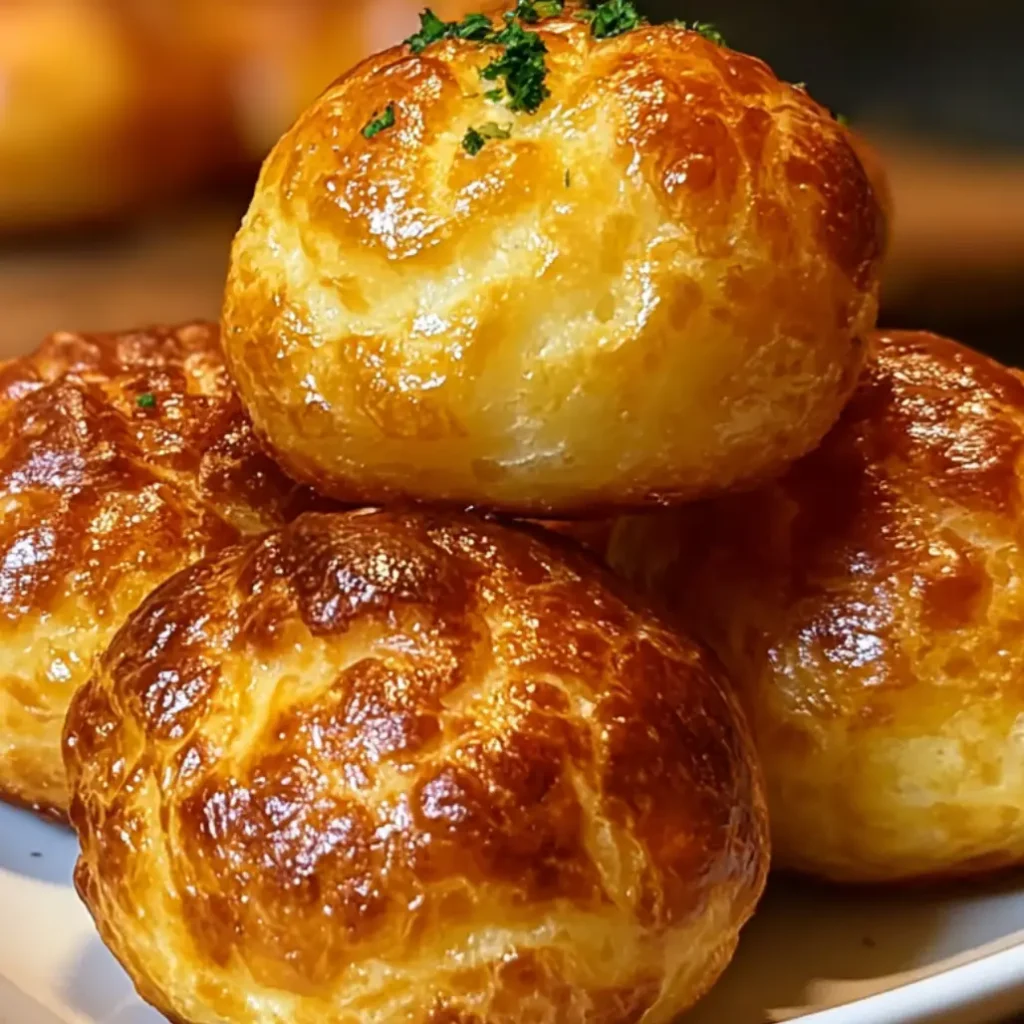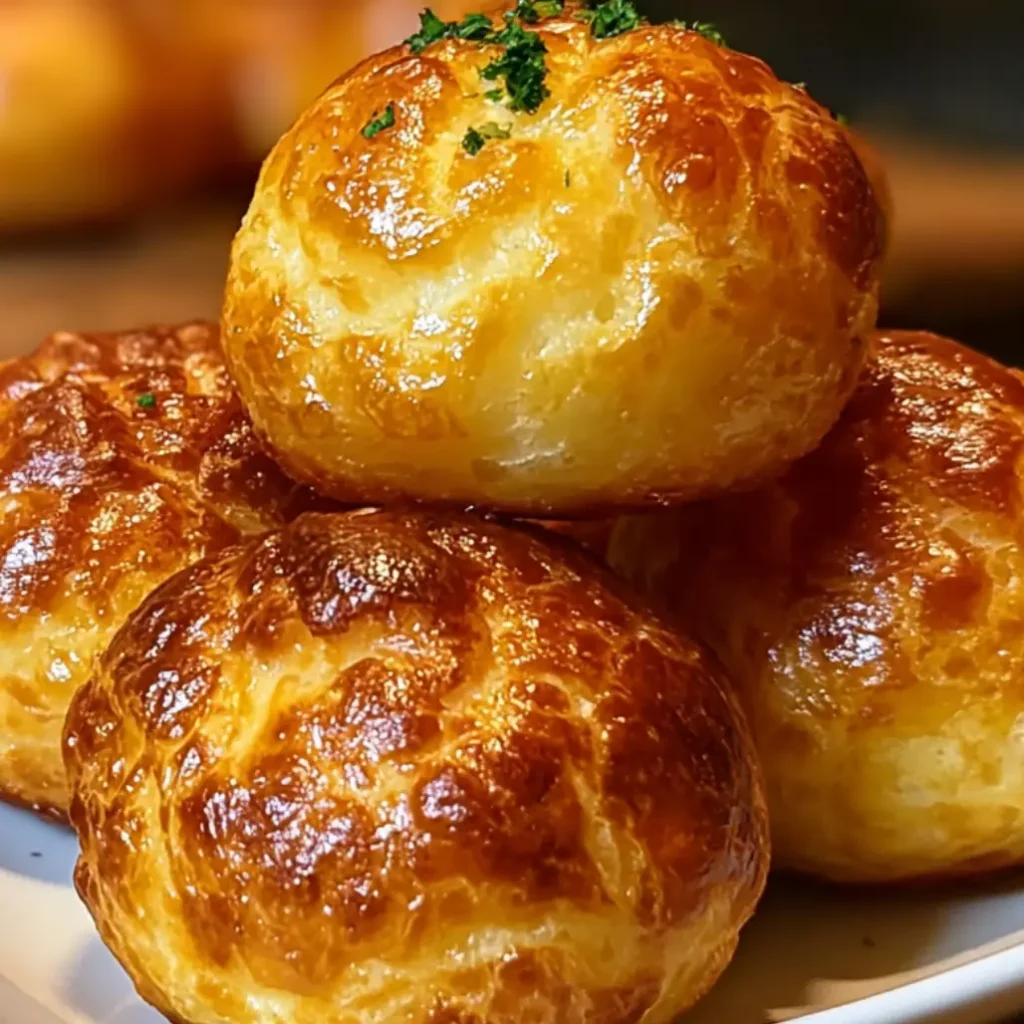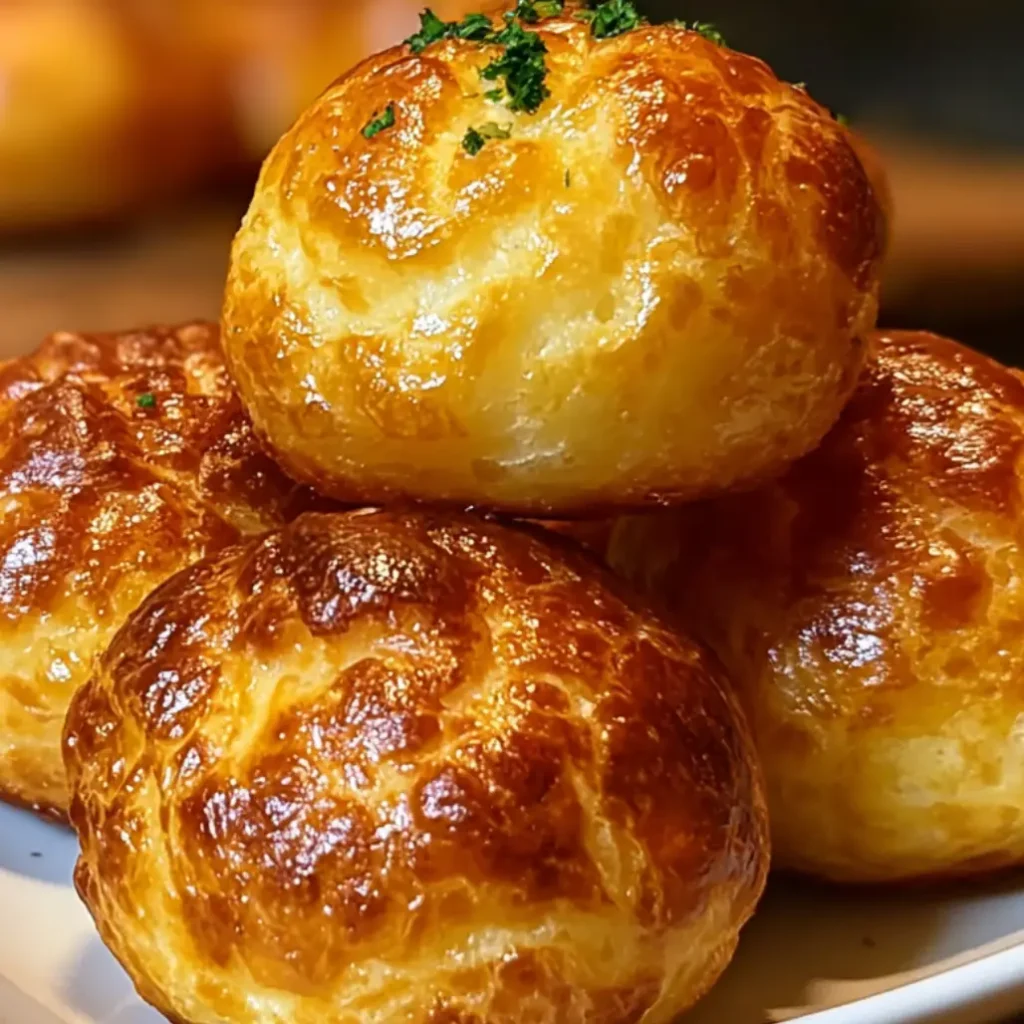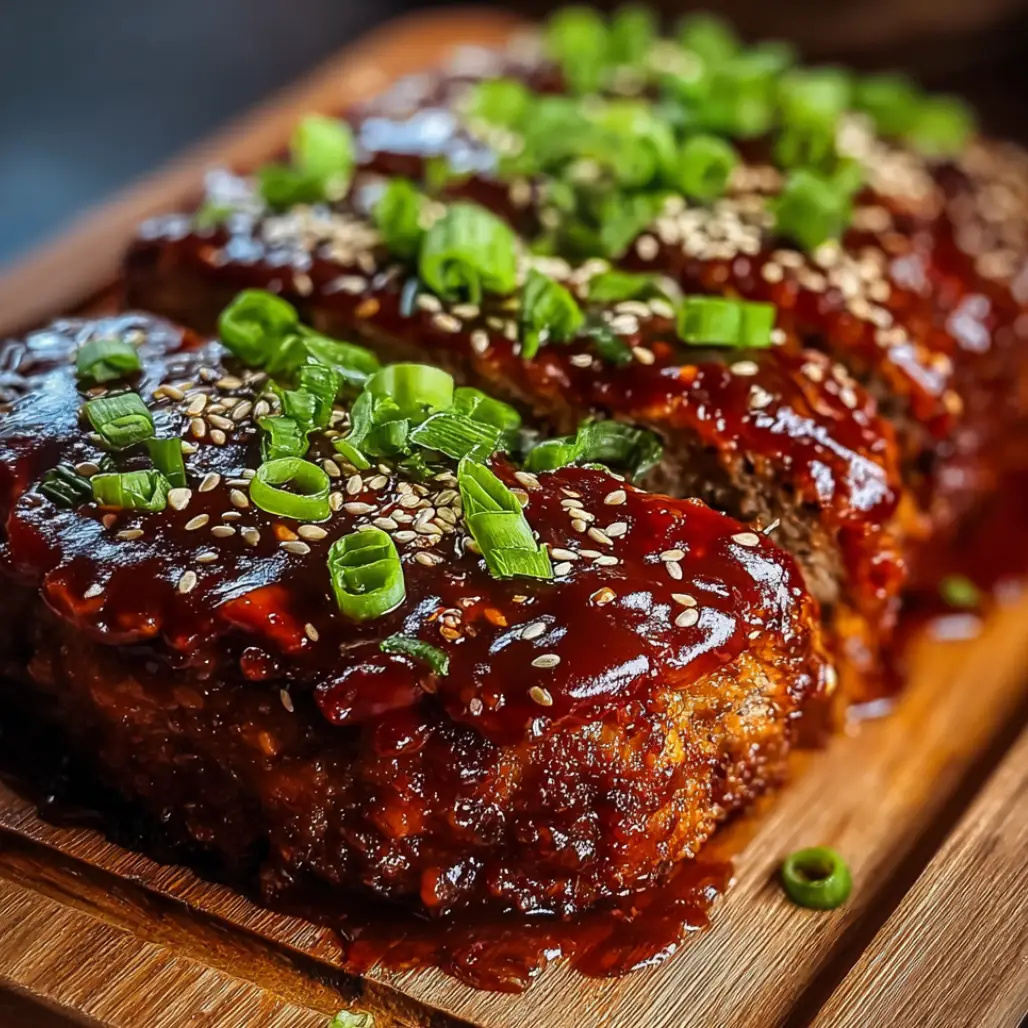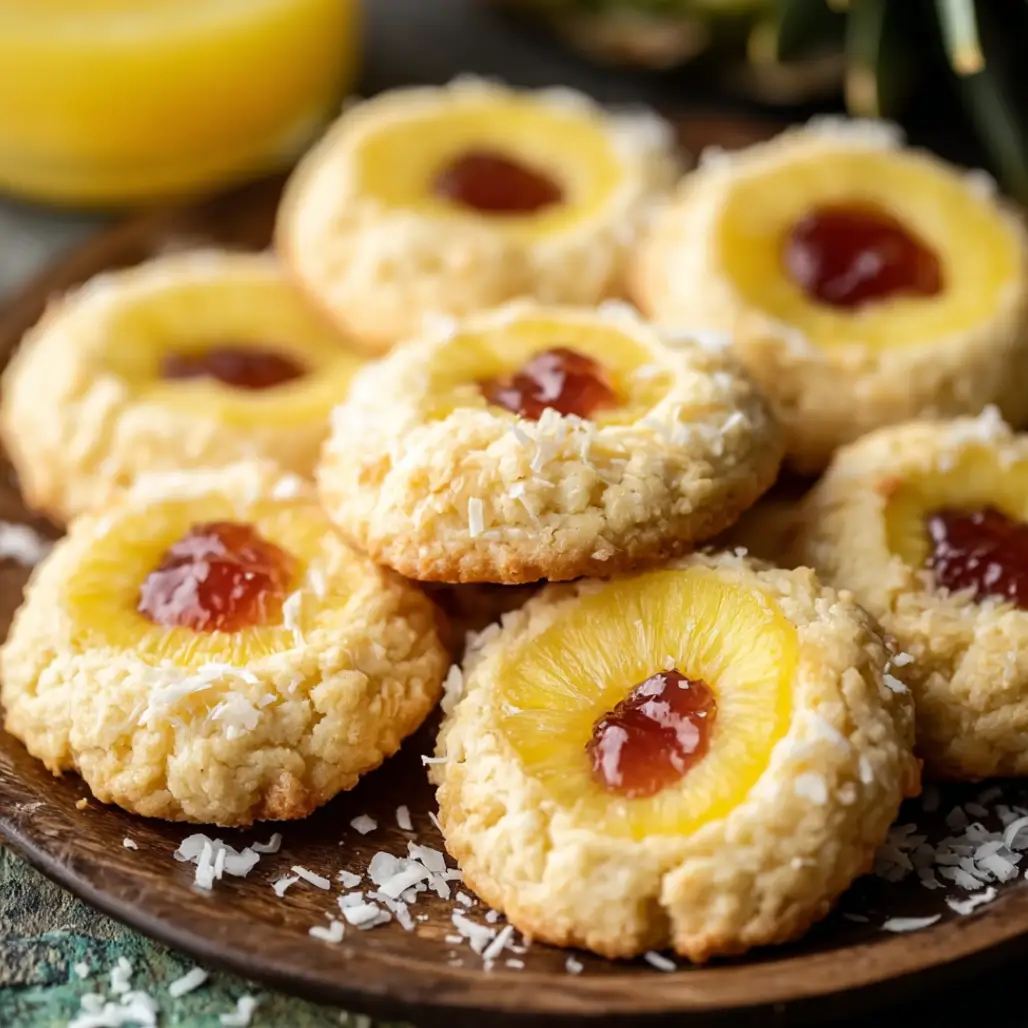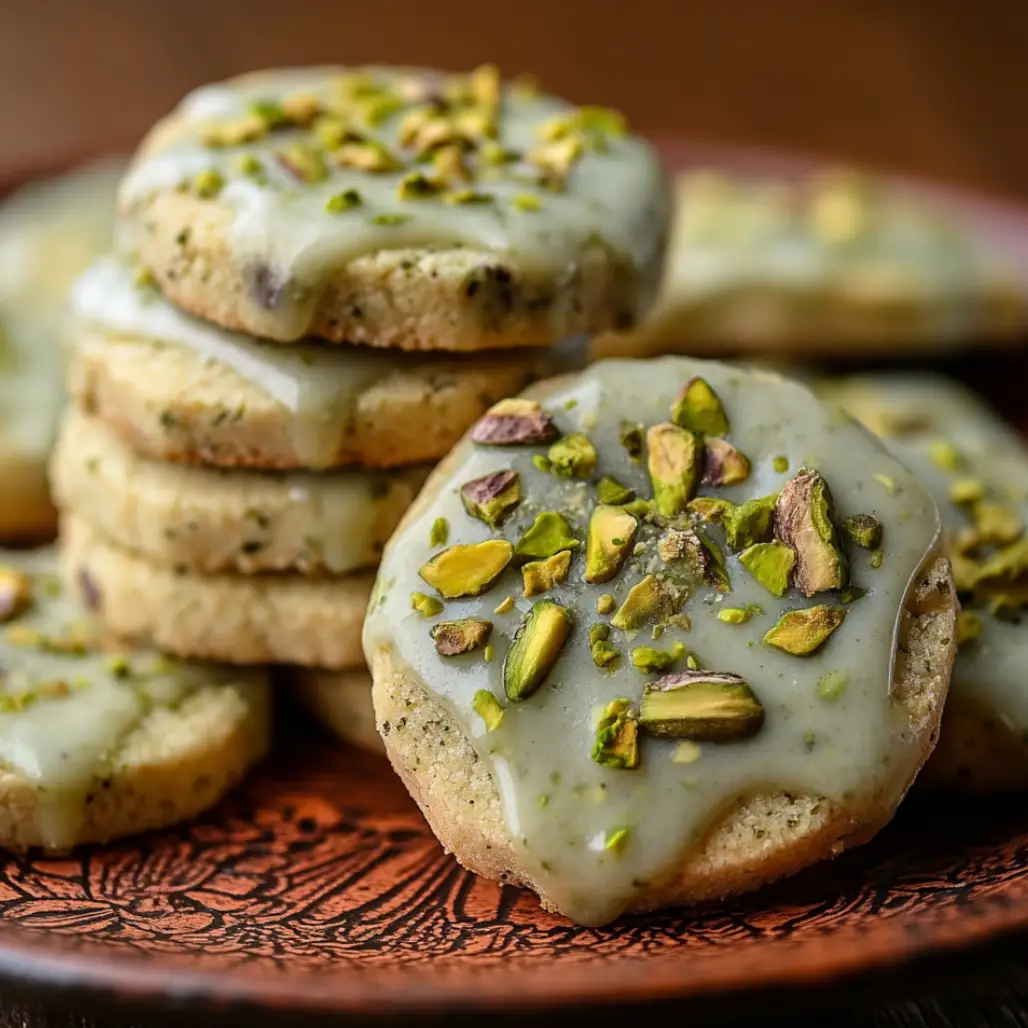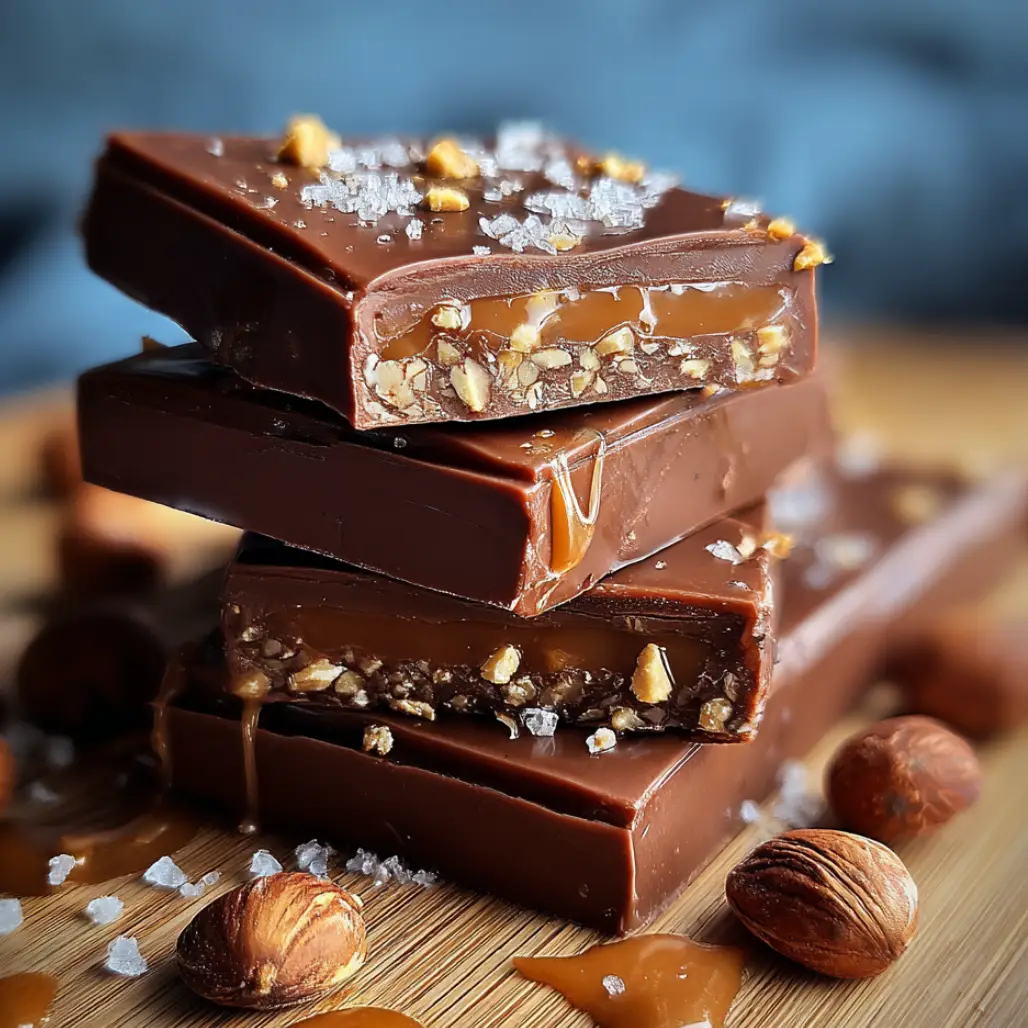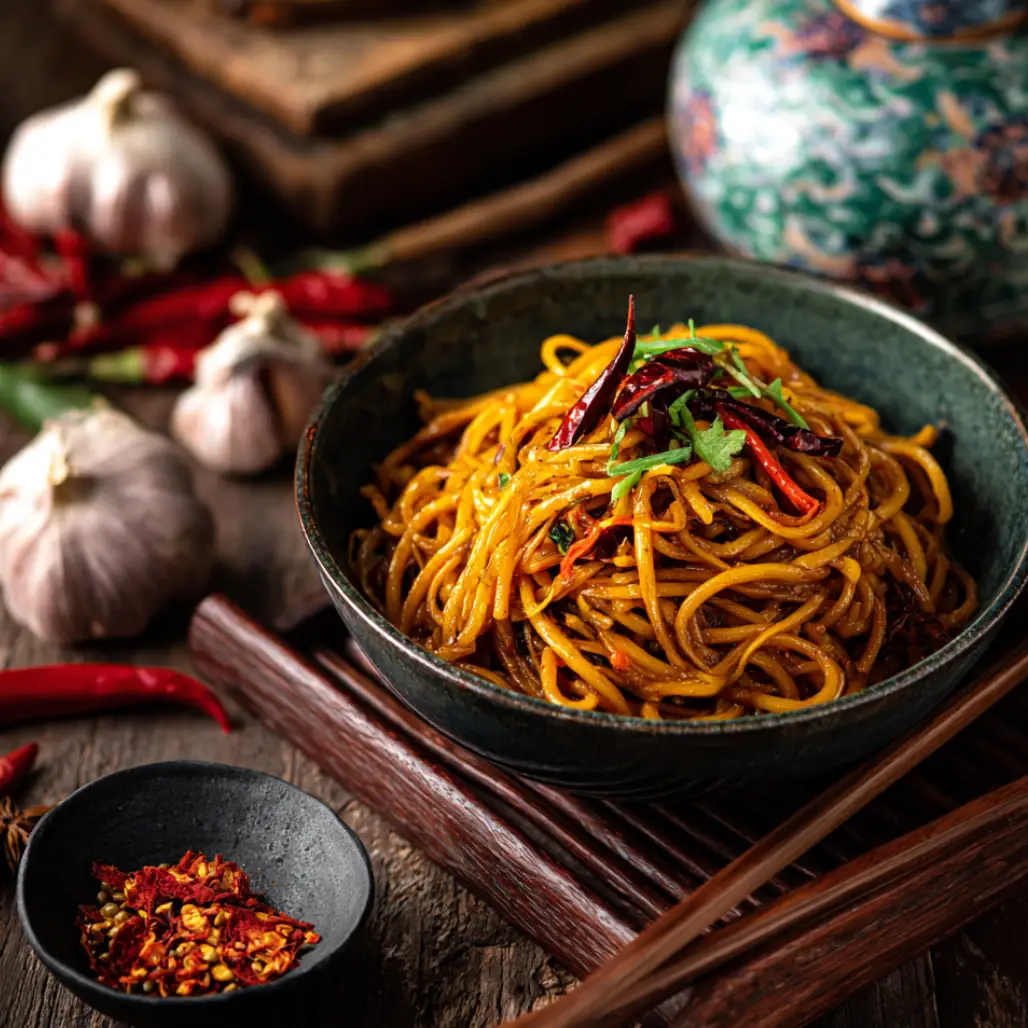Prep Time: 15 minutes
Cook Time: 25 minutes
Total Time: 40 minutes
Serves: 6
There’s something absolutely magical about the moment when golden cheese puffs emerge from the oven, their surfaces beautifully bronzed and their interiors promising that perfect balance of airy lightness and rich, melted cheese flavor. These delightful little morsels represent the pinnacle of comfort food satisfaction, because they combine the satisfying crunch of a well-baked exterior with the tender, pillowy interior that makes every bite an experience worth savoring. Whether you’re planning an elegant brunch gathering, searching for the perfect party appetizer, or simply craving a homemade snack that delivers restaurant-quality results, cheese puffs offer an incredibly versatile solution that never fails to impress both novice cooks and experienced culinary enthusiasts alike.
Why These Cheese Puffs Will Transform Your Cooking Experience
The beauty of mastering cheese puffs lies not only in their remarkable flavor profile but also in the confidence they bring to your culinary repertoire, because once you understand the simple science behind creating these golden treasures, you’ll discover countless opportunities to customize and elevate them according to your personal preferences and seasonal ingredients. These cheese puffs represent the perfect intersection of simplicity and sophistication, because they require only basic pantry ingredients yet produce results that rival those found in the finest bakeries and upscale restaurants.
What makes this particular cheese puffs recipe truly exceptional is its remarkable adaptability to various dietary preferences and flavor profiles, because the foundational technique remains consistent while allowing for creative substitutions that can accommodate gluten-free requirements, dairy alternatives, or exotic cheese combinations that reflect your culinary adventures. The process itself becomes almost meditative once you master the rhythm of creating the perfect dough consistency, because the transformation from simple ingredients to magnificent puffed delicacies happens through your careful attention to temperature, timing, and technique.
Furthermore, cheese puffs offer an excellent make-ahead option for busy entertaining schedules, because they freeze beautifully and can be reheated to crispy perfection whenever unexpected guests arrive or when you need an impressive accompaniment to complement your favorite savory sides and create a memorable dining experience.
Essential Ingredients for Perfect Cheese Puffs
The foundation of exceptional cheese puffs begins with selecting premium ingredients that work harmoniously together to create that signature texture and flavor combination that makes these treats irresistible to everyone who tries them.
All-purpose flour serves as the structural backbone of your cheese puffs, because it provides the necessary protein content to trap steam during the baking process, which creates those beautiful air pockets that give cheese puffs their characteristic light and airy interior texture.
Unsalted butter contributes essential richness and helps achieve that coveted golden-brown exterior, because the milk solids in butter brown beautifully during baking while the fat content ensures proper dough consistency and adds depth of flavor that complements the cheese perfectly.
Large eggs function as both binding agent and leavening component, because they provide the moisture necessary for steam creation while their proteins coagulate during baking to set the structure and create that custard-like interior texture that makes each bite so satisfying.
Whole milk adds moisture and tenderness to the final product, because its fat content contributes to the overall richness while helping to create a smooth, workable dough that bakes into perfectly tender cheese puffs.
Sharp cheddar cheese delivers the signature flavor that makes cheese puffs so memorable, because its tangy profile and excellent melting properties create those delightful pockets of molten cheese that provide both flavor and textural contrast within each puff.
Salt enhances all the other flavors while balancing the richness of the cheese and butter, because even a small amount helps bring out the natural flavors of each ingredient and prevents the finished cheese puffs from tasting flat or one-dimensional.
Optional seasonings such as garlic powder or paprika can add subtle complexity, because these aromatic spices complement the cheese without overwhelming the delicate balance of flavors that makes cheese puffs so universally appealing.
The Art of Creating Perfect Cheese Puffs
Understanding the science behind cheese puff creation elevates your results from good to absolutely extraordinary, because the process relies on precise temperature control and proper mixing techniques that ensure consistent success every time you prepare this beloved recipe. The key lies in creating what culinary professionals call a “choux pastry” base, which forms the foundation for numerous classic preparations including éclairs, profiteroles, and of course, our magnificent cheese puffs.
The initial heating phase requires careful attention to temperature, because bringing the milk, butter, and salt mixture to the proper simmer point ensures that the butter melts completely while the liquid reaches the optimal temperature for flour incorporation. When you add the flour all at once and stir vigorously, you’re creating what bakers call a “panade,” which forms the base that will eventually transform into those light, airy cheese puffs through the magic of steam expansion during baking.
Temperature control becomes absolutely crucial when incorporating the eggs, because adding them to dough that’s too hot will result in scrambled eggs rather than the smooth, glossy mixture that characterizes properly prepared cheese puff dough. The cooling period allows the dough temperature to drop to a level where the eggs can be successfully emulsified, creating that signature shiny appearance that indicates your dough is ready for the cheese addition.
Step-by-Step Instructions for Cheese Puff Success
Preparation Phase
Begin by preheating your oven to 400°F (200°C) and lining a large baking sheet with parchment paper, because proper preparation ensures smooth execution and prevents your beautiful cheese puffs from sticking to the pan during the baking process.
Professional Tip: Room temperature ingredients blend more easily and create smoother dough consistency, so remove your eggs and milk from the refrigerator about 30 minutes before beginning the recipe preparation.
Key Points: Freshly grated cheese melts more evenly than pre-shredded varieties, which often contain anti-caking agents that can affect the final texture of your cheese puffs.
Creating the Base Mixture
In a medium-sized heavy-bottomed saucepan, combine the milk, butter, and salt, then heat over medium temperature until the mixture reaches a gentle simmer and the butter melts completely, because achieving the proper temperature ensures optimal flour incorporation in the next step.
Professional Tip: Watch carefully for the first signs of simmering rather than allowing the mixture to reach a rolling boil, because excessive heat can cause the milk to separate or create uneven heating that affects dough consistency.
Key Points: The mixture should be hot enough to cook the flour when added, but not so hot that it causes violent bubbling that could splash and create safety concerns.
Flour Incorporation
Remove the saucepan from heat and immediately add all the flour at once, stirring vigorously with a wooden spoon until the mixture forms a cohesive ball that pulls away cleanly from the sides of the pan, because this vigorous mixing develops the proper gluten structure necessary for cheese puff success.
Professional Tip: Continue stirring for an additional 30-60 seconds after the dough forms a ball, because this extra mixing helps cook the flour thoroughly and creates the smooth texture that characterizes professional-quality cheese puff dough.
Key Points: The dough should appear smooth and slightly shiny when properly mixed, with no visible flour streaks or lumpy areas that could create uneven texture in the finished cheese puffs.
Temperature Cooling and Egg Addition
Allow the dough to cool for approximately 5 minutes, then add the eggs one at a time, beating thoroughly after each addition until the mixture becomes smooth and glossy, because proper egg incorporation creates the structure necessary for optimal puffing during the baking process.
Professional Tip: The dough may appear separated or curdled when you first add each egg, but continued mixing will bring it back together into a smooth, uniform consistency that indicates successful emulsification.
Key Points: Each egg must be completely incorporated before adding the next one, because rushing this process can result in uneven texture and reduced puffing capability in the final product.
Cheese Integration
Fold the grated cheese gently into the prepared dough until evenly distributed throughout the mixture, because careful folding preserves the air incorporation while ensuring every bite contains delicious cheese flavor.
Professional Tip: Taste the dough at this point to adjust seasoning if necessary, because the raw dough flavor closely resembles the final baked result and allows for seasoning corrections before baking.
Key Points: The cheese should be evenly distributed without overmixing, which could break down the carefully developed dough structure and affect the final texture of your cheese puffs.
Shaping and Baking
Using a small cookie scoop or tablespoon, drop portions of dough onto the prepared baking sheet, spacing them approximately 2 inches apart to allow for expansion during baking, because cheese puffs increase significantly in size as the moisture creates steam and causes the dough to puff dramatically.
Professional Tip: Avoid opening the oven door during the first 20 minutes of baking, because temperature fluctuations can cause the delicate cheese puffs to collapse before they’ve set properly and achieved their full puffed potential.
Key Points: Bake for 20-25 minutes or until the cheese puffs achieve a deep golden-brown color and sound hollow when gently tapped, because proper baking ensures a crispy exterior and properly cooked interior.
Professional Tips for Cheese Puff Mastery
Achieving consistently perfect cheese puffs requires attention to several key factors that separate amateur attempts from professional-quality results, because understanding these nuances ensures success every time you prepare this beloved recipe. Temperature consistency throughout the entire process remains absolutely critical, because even small variations can significantly impact the final texture and appearance of your finished cheese puffs.
Consider investing in an oven thermometer to verify your oven’s actual temperature, because many home ovens run either hot or cold compared to their displayed settings, and accurate temperature control directly affects both the puffing action and the final color development of your cheese puffs. Additionally, positioning your baking sheet in the center of the oven ensures even heat distribution and prevents uneven browning that can occur when cheese puffs are placed too close to heating elements.
For those interested in exploring creative variations, consider incorporating finely chopped herbs like chives, thyme, or rosemary into your cheese mixture, because these aromatic additions complement the cheese beautifully while adding visual appeal and sophisticated flavor notes that elevate your cheese puffs from simple snacks to gourmet appetizers.
Creative Variations to Explore
The basic cheese puff formula provides an excellent foundation for countless flavor variations that can reflect seasonal ingredients, personal preferences, or specific dietary requirements, because the fundamental technique remains consistent while allowing for creative ingredient substitutions that keep this recipe fresh and exciting throughout the year.
Consider experimenting with different cheese combinations such as mixing sharp cheddar with creamy Gruyère for added complexity, or incorporating Parmesan for a sharper, more intense flavor profile that pairs beautifully with Italian-inspired meals and robust red wines. For those who enjoy a bit of heat, finely minced jalapeños or a pinch of cayenne pepper can add subtle spice without overwhelming the delicate cheese flavor.
Herb variations offer another avenue for customization, because fresh or dried herbs like rosemary, thyme, or sage can transform basic cheese puffs into sophisticated accompaniments for perfect sides that complement both casual and elegant dining experiences.
Perfect Pairing Ideas for Cheese Puffs
Cheese puffs shine brightest when paired thoughtfully with complementary foods and beverages that enhance their rich, savory character while providing textural and flavor contrasts that create memorable dining experiences. Their versatility makes them equally at home alongside casual comfort foods and elegant gourmet presentations, because their neutral base allows them to adapt beautifully to various culinary contexts and seasonal menus.
For brunch presentations, cheese puffs pair magnificently with breakfast favorites like scrambled eggs, crispy bacon, or fresh fruit salads that provide bright acidity to balance the rich cheese flavors. The combination creates a satisfying meal that feels both indulgent and balanced, because the cheese puffs add substantial satisfaction while the lighter accompaniments prevent the overall meal from feeling too heavy.
Evening entertaining opportunities abound when you incorporate cheese puffs into appetizer spreads alongside snacks appetizers that offer complementary flavors and textures, because their elegant appearance and sophisticated taste make them perfect for wine tastings, cocktail parties, or intimate dinner gatherings where presentation matters as much as flavor.
Discover More Culinary Adventures
Expanding your culinary repertoire beyond cheese puffs opens doors to numerous other satisfying recipes that share similar techniques or complement these delightful morsels perfectly, because mastering one foundational recipe often provides the confidence and skills necessary to tackle more complex culinary challenges with greater success and enjoyment.
Explore the world of salads that provide fresh, crisp contrasts to rich cheese puffs, because the combination of warm, savory puffs with cool, refreshing greens creates dynamic meals that satisfy various taste preferences and dietary needs while maintaining visual appeal and nutritional balance.
Consider incorporating flavored dips marinades into your entertaining repertoire, because these versatile accompaniments can transform simple cheese puffs into elegant appetizer presentations that impress guests while requiring minimal additional preparation time and effort.
Storage Guidelines for Maximum Freshness
Proper storage techniques ensure that your carefully crafted cheese puffs maintain their optimal texture and flavor for extended periods, because understanding how to preserve their delicate balance of crispy exterior and tender interior allows you to prepare them in advance for entertaining or enjoy leftovers without compromising quality.
Freshly baked cheese puffs taste best when served immediately after cooling slightly, because the contrast between the warm interior and crispy exterior reaches its peak during this optimal serving window. However, completely cooled cheese puffs can be stored in airtight containers at room temperature for up to two days while maintaining acceptable texture and flavor, though they may lose some of their initial crispiness during storage.
For longer storage periods, refrigeration extends their shelf life to approximately five days, because the controlled environment prevents spoilage while maintaining food safety standards. Reheating refrigerated cheese puffs in a 350°F oven for 5-7 minutes helps restore much of their original texture and warmth, because the dry heat revitalizes the crispy exterior without overcooking the tender interior.
Freezing offers the most convenient long-term storage solution, because properly frozen cheese puffs maintain their quality for up to three months while providing ready-to-bake convenience for unexpected entertaining opportunities or quick snack preparation.
The Science Behind Perfect Cheese Puffs
Understanding the scientific principles that govern cheese puff creation helps explain why specific techniques produce superior results and provides the knowledge necessary to troubleshoot problems when they arise, because cooking science demystifies the seemingly magical transformation of simple ingredients into extraordinary culinary creations.
The puffing action results from steam expansion within the dough structure, because the moisture from eggs and milk converts to steam during baking, creating internal pressure that inflates the flexible gluten network formed by proper flour incorporation and mixing technique. This steam expansion explains why proper oven temperature remains so critical, because insufficient heat fails to generate adequate steam pressure while excessive heat can set the exterior too quickly, preventing full expansion.
The Maillard reaction creates the beautiful golden-brown color and develops complex flavors, because proteins and sugars present in the eggs, milk, and cheese undergo chemical changes at elevated temperatures that produce both visual appeal and enhanced taste characteristics that make cheese puffs so irresistibly delicious.
Troubleshooting Common Cheese Puff Challenges
Even experienced cooks occasionally encounter issues when preparing cheese puffs, because numerous factors can influence the final results and understanding common problems helps ensure consistent success with every batch you create.
Flat or deflated cheese puffs typically result from inadequate oven temperature, insufficient baking time, or premature cooling exposure, because these conditions prevent the internal structure from setting properly before the steam pressure dissipates and causes collapse. Always verify your oven temperature with a reliable thermometer and resist opening the oven door during the initial baking phase, because temperature fluctuations can disrupt the delicate puffing process.
Overly dense or heavy cheese puffs often indicate improper egg incorporation or excessive mixing after flour addition, because these issues can break down the gluten structure or create uneven moisture distribution that prevents proper steam expansion during baking. Pay careful attention to mixing techniques and ensure each egg is fully incorporated before adding the next one, because patience during this phase directly impacts your final results.
Uneven browning suggests oven hot spots or improper rack positioning, because heat distribution varies significantly between different oven types and models, requiring adjustments to ensure consistent results across all cheese puffs in each batch.
Additional Inspirations for Cheese Puff Enthusiasts
Once you’ve mastered the fundamental cheese puff technique, countless opportunities exist to expand your skills and explore related recipes that build upon the same foundational knowledge while introducing new flavors and presentations that keep your culinary adventures fresh and exciting.
Consider exploring dessert recipes that utilize similar choux pastry techniques, because the same dough preparation methods can create sweet treats like cream puffs, éclairs, and profiteroles that showcase your newly developed skills in different contexts while expanding your dessert repertoire.
Investigate refreshing beverages that complement rich, savory appetizers like cheese puffs, because the right beverage pairings can elevate simple snacks into sophisticated entertaining experiences that impress guests while demonstrating your attention to flavor harmony and presentation details.
Conclusion
Cheese puffs represent far more than a simple appetizer or snack, because they embody the perfect marriage of technique and creativity that defines exceptional home cooking while providing endless opportunities for customization and personal expression through ingredient choices and flavor combinations. The satisfaction derived from mastering this classic recipe extends beyond the immediate pleasure of eating these golden delights, because the confidence gained through understanding proper technique opens doors to countless other culinary adventures and cooking challenges.
Whether you’re preparing cheese puffs for an elegant dinner party, a casual family gathering, or simply indulging in a homemade snack that rivals any restaurant offering, the skills and knowledge gained through this recipe will serve you well throughout your continued culinary journey. The combination of simplicity and sophistication that defines cheese puffs makes them an invaluable addition to any cook’s repertoire, because they deliver impressive results that belie their straightforward preparation while providing the flexibility to adapt to various occasions and preferences.
Remember that cooking excellence develops through practice and experimentation, because each batch of cheese puffs offers opportunities to refine your technique, explore new flavor combinations, and build the confidence necessary to tackle even more ambitious culinary projects with enthusiasm and success.

